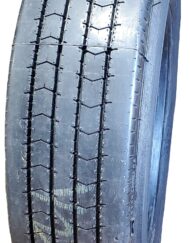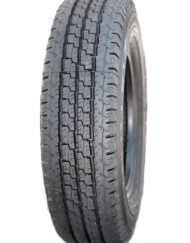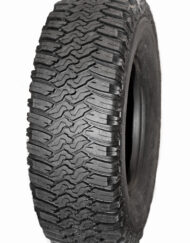We’ve Come a Long Way: The History of Retread Tires
When vehicles were originally equipped with pneumatic tires back in the early 1900s, the most challenging problem was getting the tires to withstand cuts, punctures, penetrations and blowouts. Back then, a tire in excellent shape would only average about 1,000 miles before wearing out, but because the roads were unpaved and riddled with hazards, most wouldn’t even last that long. As a result, people started to investigate ways to extend tire life. Hence, the practice of tire retreading was born.
The Origin of Retread Tires
Back in the early 1900’s, one of the first methods invented for extending the life of tires was the process of retreading. Even still, there were various forms of this method being tested. One such way was to apply several layers of uncured rubber to the tire. A third circle mold was then used to vulcanize 1/3 of the tire at a time until the complete tire was cured. The main problem with this technique was that moving sections around in the mold led to unequal curing. Additionally, it was difficult to control temperature and molds weren’t available for every size of tire on the market.
In 1912, Marion Oliver developed and patented a tire retreading method known as pre-cured treads. This process involved buffing the tire to the fabric and then placing the pre-cured tread on top. A hoop was then placed at the top of the tread and a spring was used to push the casing in place. The tire was then coated in talc and soapstone mud and wrapped in strips of cotton before being sent through a steam-curing pressure chamber. Finally, the baked-on mud would be removed using a strong object.
Increasing Demand = Continued Improvement
Between the years of 1910 and 1920, America saw a remarkable increase in the transportation industry, from 500,000 cars on the road in 1910 to an incredible 8 million by 1921. As a result, the need for better, more efficient and cost-effective ways to retread tires also increased. Innovations like the use of extruders to apply pre-heated, uncured rubber to a buffed, cemented tire and the invention of the full-circle mold to accommodate several sizes of tire were among the most noteworthy improvements.
The use of airbags to push the tire against the mode was also introduced, replacing solid iron cores and subsequently improving the quality of the mold cure tire retreading process. Advancements were also made in the area of buffing equipment, which shifted from hand-held rotating to mechanical buffing.
Industry Growth
With the increasing demand, the industry of tire retreading also took off. Retread tires were particularly useful and invaluable during the Great Depression because people were able to use them until they wore out, rather than have to worry about replacing them due to damage or blowouts, as were so common in years past. This, coupled with the declining price of rubber made retread tires an affordable and very practical option for those struggling to make ends meet. As a result, more and more major tire companies began entering the burgeoning industry, even as the processes used continue to improve.
Synthetic rubber was ultimately invented to replace natural rubber and was extensively used in retread stock – particularly on domestic soil. In just 2 short years (1942-1944), the tire retreading industry saw growth of 500%. In addition to expansive consumer use, the US armed forces also relied heavily on retread tires, even investing in additional research for greater improvements.
Ongoing Innovation
As improvements in the area of synthetic rubber production and the availability of natural rubber increased, the tire retreading industry continued to grow and flourish. Electrically heated molds were introduced, enabling smaller retread operations to invest in individual molds and gradually expand their production. Significant improvements were also made to buffing rasps and by the end of the 1940s there were close to 9,500 retread shops in business.
Over the next several decades, retreaders were forced to meet new and changing challenges, including the adoption of tubeless technology, and the use of tire venting and inner liner spraying to detect and prevent casing separation. Additionally, the use of an envelope replaced metal banding in the curing process. The 60’s and 70’s saw fluctuations in the number of tire retreading companies that dominated the market, culminating in the introduction of radial tires, which ultimately changed the face of American tire retreading.
Globalization & High Tech Advances
In the 1980’s, globalization in tire retreading was being embraced by more and more companies, and this was reflected in the dwindling number of US retreaders. By 1989, the number of retread plants in the US dropped to 2,100.
In the 1990’s, a surge of growth in the industry was spurred by the introduction of high-tech, computer-controlled tire retreading equipment. Additionally, the use of ultrasound and x-ray technology also became available and more widely adopted by retreaders. The result has been higher-speed production and enhanced testing capabilities. Other techniques, like computer-controlled buffing, building and extruding, have also changed the face of tire treading for the better. And, thanks to state-of-the-art compounding, today’s recapped tires last longer, run cooler and maintain a greater resistance to irregular wear.
Today, the number of experienced tire retreading companies is just a fraction of what once was a booming business. As a result, those who have remained dedicated to the industry are able to provide exceptional level of service and outstanding products thanks to their expertise. Visit our website to learn more about the tire retreading process.




